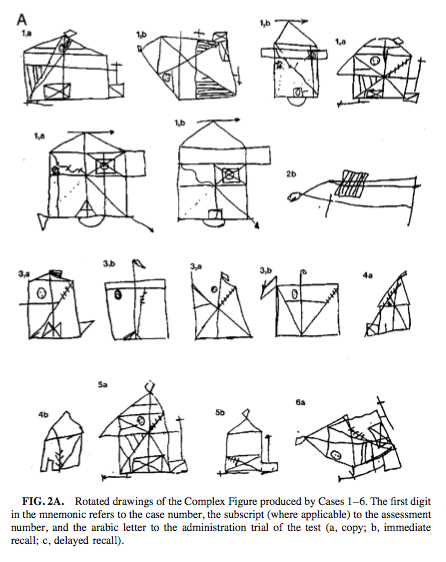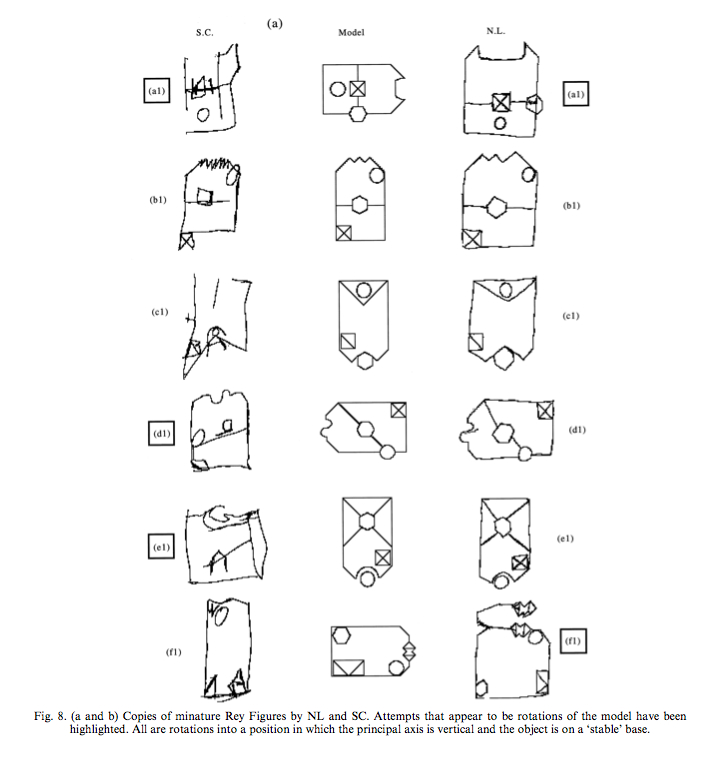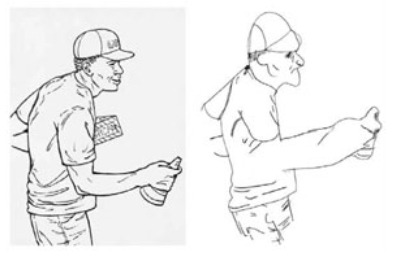Visuo-Spatial research
Complex Figure drawings from Solms, Turnbull, Kaplan-Solms & Miller (1998) |
Rey Figures from Turnbull,Beschin & Della Sala (1997) |
Before my work on emotion, I worked in the domain of visuo-spatial cognition and object recognition.The most prominent of the findings was the disorder often described as 'orientation agnosia': in whichneurological patients have a sound knowledge of the relative internal spatial properties of an object, butlack knowledge of object orientatiion. It is closely associated with the clinical sign of rotated drawing(see Solms et al., 1998). This section has only some of the papers on visuo-spatial topics -mainly themore recent ones, which are on pdf.
- Turnbull, O.H., Driver, D. & McCarthy, R.A. (2004). 2D but not 3D: Pictorial-depth deficits in a case of visual agnosia.Cortex, 40: 723-738.(download)
- Turnbull, O.H., Beschin, N. & Della Sala, S. (1997). Agnosia for object orientation: Implications for theories of objectrecognition. Neuropsychologia, 35: 153-163.(download)
- Turnbull, O.H. & Laws, K.R. (2000). Loss of stored knowledge of object structure: Implications for 'category-specific÷deficits. Cognitive Neuropsychology, 17: 365-389.(download)
- Turnbull, O.H., Della Sala, S. & Beschin, N (2002). Agnosia for object orientation: Naming and mental rotation evidence.Neurocase, 8: 296-305. (download)
- Solms, M., Turnbull, O.H., Kaplan-Solms, K. & Miller, P. (1998). Rotated drawing: The range of performance, and anatomical correlates, in a series of 16 patients. Brain & Cognition, 38: 358-368.(download)
DM's copy drawing from Turnbull, Driver & McCarthy (2004) |


